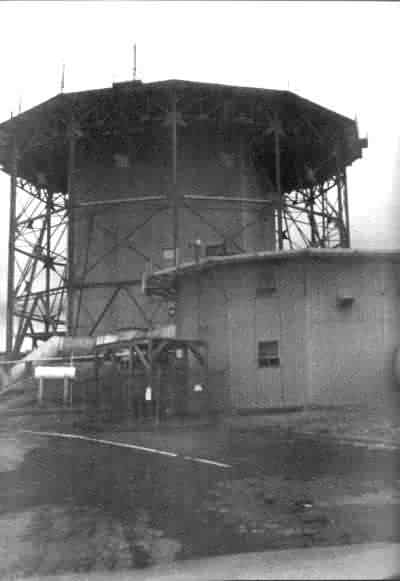

Like a forgotten, wind-bitten outpost of the Old West, Mount Hebo Air Force Station, high in the Cascade Mountains of northwestern Oregon, stands its ground against the flailing of time.
No longer does its radar search the skies as it did beginning in October 1956 with the arrival of the 689th Aircraft Control and Warning Squadron, once a part of the North American Aerospace Defense Command.
Then there was the clamor of Air Force members working the site and with their families shopping its commissary, its BX, and living in quarters on the mountain.
The mission was meaningful, making up some for the hardships of mountain living. Those at Mount Hebo maintained a long-range radar site complete with communications and electronic equipment. Surveillance and height determination data gathered at the site was relayed to the Semi-Automatic Ground Environment Center at 25th NORAD Region Headquarters, McChord AFB, Wash.
With the times the mission also changed. Mount Hebo had done its duty well, standing watch faithfully until the summer of 1979 when the 689th was deactivated.
The mountain site`s mission was taken away and given to the Federal Aviation Administration`s radar post at Salem, Ore. Mount Hebo`s replacement became part of a network of radars whose data would be shared by both NOMAD and the FAA, a more economical means of meeting both peacetime air defense and civilian air traffic needs.
The clamor was gone out of the old site, left alone by those fast departing to stand up to the winds that whistled through its covered walkways at more than 150 knots.
The weathered site is bent now but not broken, all but abandoned but with a faint heartbeat. Six Air Force members and a handful of civilian civil engineers look after it; there is no death rattle.
Mount Hebo is one of five "frontier" radar sites in the 25th NORAD Region, responsible for air defense in the Pacific Northwest, And the old sita has maintained the dignity of identity, designated Operating Location: AD, 25th Air Division.
And where there`s life there`s purpose, even if it`s no match for those glory years.
"The only mission left here is our GATR [ground-to-air transmitter receiver] responsibilities," said Mount Hebo`s site chief, MSgt. Dale E, Huth.
"We maintain the GATR, which fills the communication gap between Makah Air Force Station [Wash,] and Crescent City [Calif,], The GATR radios help weapons controllers at the Region Control Center at McChord communicate with interceptor pilots and the E-3A [AWACS] when it`s flying. We also maintain the data link that ties the center`s computer to our interceptors, enabling controllers to guide them to a target."

The vast array of radios and data link consoles at the site requires constant checking to ensure their air defense capability is maintained. Another function at the site is to monitor weekly T-3, 3 flights lounched throughout the region to check radar and communication equipment.
It can be a difficult job keeping the site operating, but when the wind dies down, the men talk openly of their love for Mount Hebo. They point out that the challenge of their jobs and the pure beauty of the site itself more than outweigh the benefits of a more normal Air Force assignment.
The old mountain site is tentatively scheduled for full deactivation in the summer of 1983 when it will be turned over to the Oregon Forestry Service.
No matter. On a clear day you can still see the sun slip above the Cascades and watch it set over the Pacific without stirring from the vantage point Mount Hebo offers.
Some things are changeless. As always, when and if there is a new call to duty, Mount Hebo will answer.